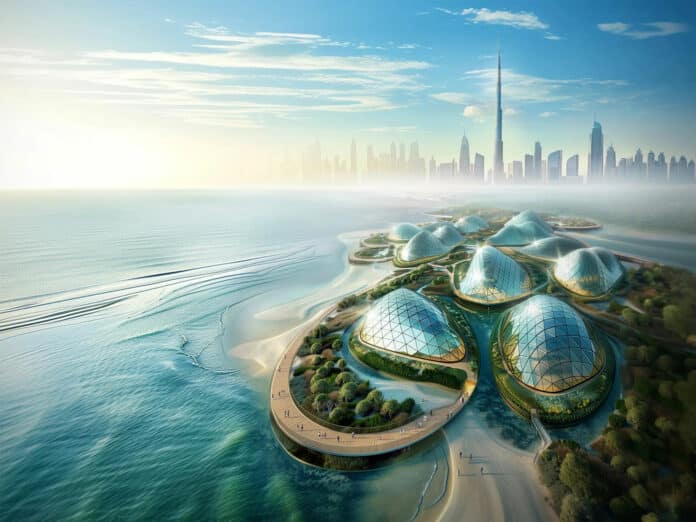Dubai is on the brink of something monumental – a coastal regeneration project that could change the city’s landscape forever. Urb, a local firm, has put forward an ambitious plan to plant over 100 million mangrove trees along Dubai’s shores, making it the world’s largest coastal regeneration project.
The primary objective of this project is to protect Dubai’s beautiful coastline from erosion and rising sea levels, ensuring that it remains intact for generations to come. However, the benefits don’t end there. This project also aims to sequester CO2 and contribute to the fight against climate change.
With a track record of proposing groundbreaking initiatives like climate-controlled cycle paths and reef regeneration developments, Urb is the perfect candidate to lead this project, which spans over a staggering 72 km (almost 45 miles). The Dubai Mangroves project is a remarkable feat of engineering and conservation, and it is a testament to the city’s commitment to sustainable development.
“At the heart of this initiative are mangroves, known for their unique ability to sequester carbon, protect coastal areas from erosion, and support marine life and food security,” explains Urb. “With the capacity to absorb approximately 12.3 kg (27 lb) of CO2 annually per tree, the entire project can sequester 1.23 million tonnes of CO2 each year, the equivalent of removing the CO2 emitted by more than 260,000 gasoline-powered passenger vehicles from the roads each year.”
The proposed mangrove plantation would have multiple benefits, such as sequestering CO2, serving as natural sea defenses, improving fish stocks, and filtering water with their roots. However, planting such a large number of trees would be a huge undertaking and take many years.
To speed up the process, AI-powered drones and satellite imagery could be used to monitor and enhance the growth and health of the mangrove trees, according to Urb.
Dubai Mangroves would not only preserve the environment but also create social spaces and educational hubs. The project is still in the design stage, but six pilot studies have been chosen to demonstrate its feasibility.
With climate change being a pressing issue, Dubai Mangroves could be a welcome change from constructing massive buildings. It would offer a much-needed retreat for both residents and visitors alike. The visitor hub would educate and engage the community about the importance of mangroves and broader environmental challenges facing the planet.
The botanic museum and nature center would promote environmental stewardship and encourage research and education. Dubai Mangroves has the potential to be a sustainable and environmentally friendly project that would benefit the city and the planet.
